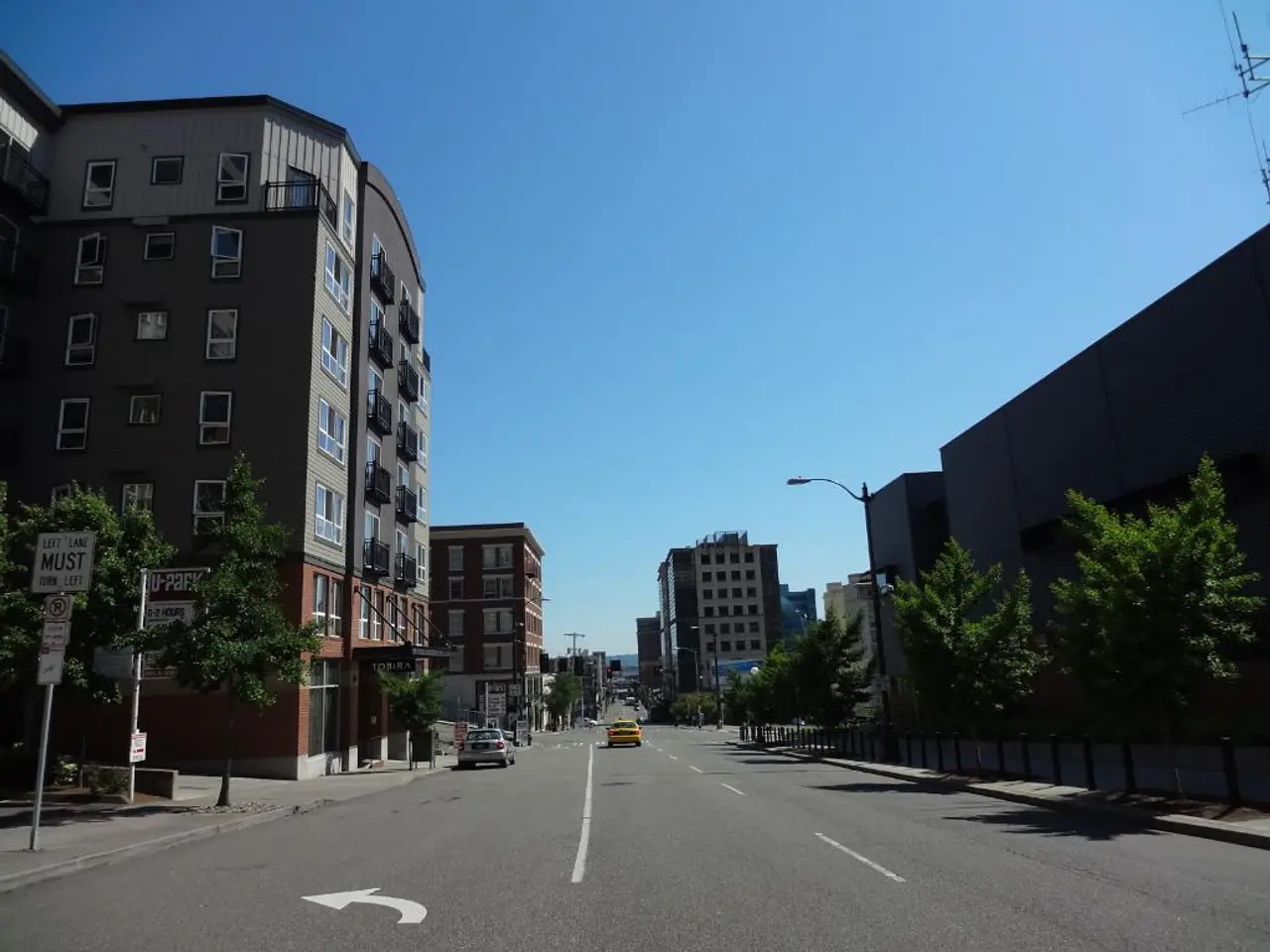Navigating Intelligent Mobility with User Interaction: MiniSchanz's Innovative Approach
Introducing MiniSchanz: A Revolutionary Traffic Management System
In the heart of urban mobility innovation, a new hybrid system is making waves – the MiniSchanz hybrid system. This cutting-edge approach combines real-time traffic simulation with AI-based traffic control to revolutionise the way cities manage their traffic.
What is the MiniSchanz Hybrid System?
MiniSchanz is a unique blend of microscopic traffic simulation models and artificial intelligence algorithms. These models simulate vehicle-level traffic in real-time, while the AI analyses live traffic data to optimise traffic signals and routing dynamically.
The system relies on continuous data feeds from sensors, cameras, and connected vehicles to create a high-fidelity digital twin of traffic flow on targeted urban networks or corridors. This digital twin can predict near-future traffic scenarios based on current conditions.
Key Features
One of MiniSchanz's standout features is its dynamic signal control. Traffic lights are not bound to fixed timers but adapt to real-time congestion and traffic demands. The system's predictive capability anticipates congestion, proactively managing it before it becomes a problem.
MiniSchanz is also designed to consider multiple modes of transport, including private vehicles, public transport, pedestrians, and cyclists, to optimise overall mobility. Its scalability allows for deployment from small intersections to larger urban networks.
Contributions to Sustainable and Efficient Mobility
By smoothing traffic flow and reducing stop-and-go driving, MiniSchanz helps lower fuel consumption and pollutant emissions, supporting environmental goals. It also improves travel time reliability, providing commuters with more predictable and shorter travel times.
MiniSchanz aligns with smart city initiatives, promoting intelligent infrastructure management. It encourages more sustainable transport options beyond private cars and can reduce the need for costly infrastructure expansions by making better use of existing road capacity.
MiniSchanz in Action
The simulation in MiniSchanz is based on a detailed real-time simulation of the traffic in Ingolstadt. The city model, 3D-printed to represent Ingolstadt, is controlled via AI-based interventions such as road closures or traffic guidance. Four ceiling projectors are used to project simulated traffic onto the physical model.
The students from the Master's program in Artificial Intelligence further developed MiniSchanz under the guidance of doctoral student Alexander Horn. They integrated AI-supported gesture control and object recognition into the system. All interventions are immediately implemented in the digital model and projected onto the city model.
In summary, the MiniSchanz hybrid system offers adaptive, forward-looking traffic management solutions. Its real-time responsiveness and predictive modeling contribute to smoother traffic flows, reduced environmental impact, and enhanced urban mobility – all central to sustainable transportation planning. MiniSchanz provides answers to tomorrow's mobility questions today, demonstrating how artificial intelligence becomes tangible when placed in concrete societal contexts.
The MiniSchanz hybrid system, with its integration of microscopic traffic simulation models, artificial intelligence algorithms, data from sensors, cameras, and connected vehicles, is revolutionizing education-and-self-development in the field of traffic management and urban mobility by offering learning opportunities through its adaptive, forward-looking solutions. Its key features like dynamic signal control and consideration for multiple modes of transport showcase the power of artificial-intelligence in shaping the future of our cities and transportation systems.




